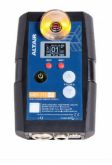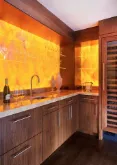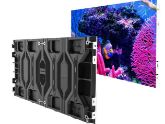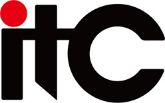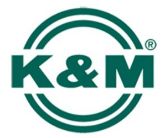.jpg_900.jpeg)
The Edwards Interactive Panel / 4K TV - explained
What is under the hood?
4K UHD LED LCD
You’ll often see this bandied around. Want to know what it actually means? Read on…
A 4K UHD LED LCD screen refers to a display technology that combines the benefits of 4K Ultra High Definition (UHD) resolution with LED backlighting and Liquid Crystal Display (LCD) technology.
The term ‘4K UHD’ refers to the screen’s resolution, which is four times the resolution of Full HD (1080p). A 4K UHD screen typically has a resolution of 3840 x 2160 pixels, resulting in a total of approximately 8.3 million pixels. This higher pixel density enables the screen to display sharper and more detailed images compared to lower-resolution displays. With 4K UHD, viewers can enjoy enhanced clarity, finer details, and smoother edges, providing a more immersive visual experience.
‘LED’ refers to the backlighting technology used in the screen. LED (Light Emitting Diode) backlighting is a popular choice for LCD screens due to its energy efficiency and ability to produce bright and vibrant colours. LED backlighting also allows for better control of brightness levels, resulting in improved contrast and deeper blacks. This contributes to the overall image quality and enhances the viewing experience.
Lastly, LCD stands for Liquid Crystal Display. LCD technology is used to create the individual pixels that make up the screen. Liquid crystals are sandwiched between two layers of glass and respond to electrical currents to control the amount of light passing through each pixel. This enables the screen to display different colours and shades accurately. The combination of LCD technology with LED backlighting provides a balance between accurate colour reproduction and energy-efficient illumination.
A 4K UHD LED LCD screen offers a high-resolution display with four times the pixel density of Full HD. The LED backlighting technology provides vibrant colours, improved contrast, and energy efficiency, while the LCD technology controls the individual pixels to accurately reproduce colours and create detailed images. Together, these technologies create a visually stunning and immersive viewing experience for your students and/or business colleagues.
Running the gamut: we explain colour gamut and greyscale resolution!
Colour Gamut: the colour gamut represents the range of colours that a display can reproduce. The NTSC (National Television System Committee) is a standard used to measure colour gamut. An NTSC 85% colour gamut means that the display can reproduce 85% of the colours within the NTSC colour space. A higher percentage indicates a wider range of colours and more vibrant and accurate colour reproduction.
Grayscale Resolution: grayscale resolution refers to the number of distinct shades of gray that a display can produce. A grayscale image consists of shades of gray ranging from pure black to pure white. A resolution of over 128 grayscale means that the display can differentiate between at least 128 different shades of gray, providing a more detailed and nuanced grayscale representation.
Having a colour gamut ≥ NTSC 85% and over 128 grayscale resolution on the Edwards Touchscreen TV indicates that the display is capable of reproducing a wide range of colours with accuracy and displaying subtle variations in shades of gray. This is desirable for presentations and interactive activities that require accurate colour representation, such as when analyzing complex data, sharing visually appealing content, or conducting virtual meetings. It enhances the visual experience by delivering more vibrant and realistic colours and ensuring precise grayscale rendering for black and white content.
And 7H hardness?
The term ‘7H hardness’ refers to the level of hardness or resistance of the display surface to scratches. The hardness rating is measured on the Mohs scale, which ranges from 1 to 10, with 10 being the highest level of hardness.
A 7H hardness rating indicates that the surface of the LED TV has a high level of resistance to scratches. It means that the display is more durable and less prone to damage from everyday use, such as accidental contact with sharp objects or rubbing against rough surfaces.
The hardness rating is achieved through the application of a protective coating on the display surface. This coating helps to minimize the appearance of scratches and keeps the screen looking clearer and more pristine for a longer period.
However, it's important to note that even with a 7H hardness rating, the display is not completely scratch-proof. While it offers a significant level of protection, it is still possible to scratch the screen if subjected to excessive force or sharp objects. Therefore, it is advisable to handle the TV with care and avoid using abrasive materials when cleaning the screen.
Simply put, a 7H hardness rating on an LED TV indicates that the display surface is highly resistant to scratches and provides an added layer of durability. It is a highly desirable feature that helps to maintain the appearance and longevity of the TV – particularly in classroom and tougher corporate environments or where the TV is on a mobile trolley.
Now you know! Give our team a call to discuss the perfect LED Touchscreen TV for your meeting or learning space.

